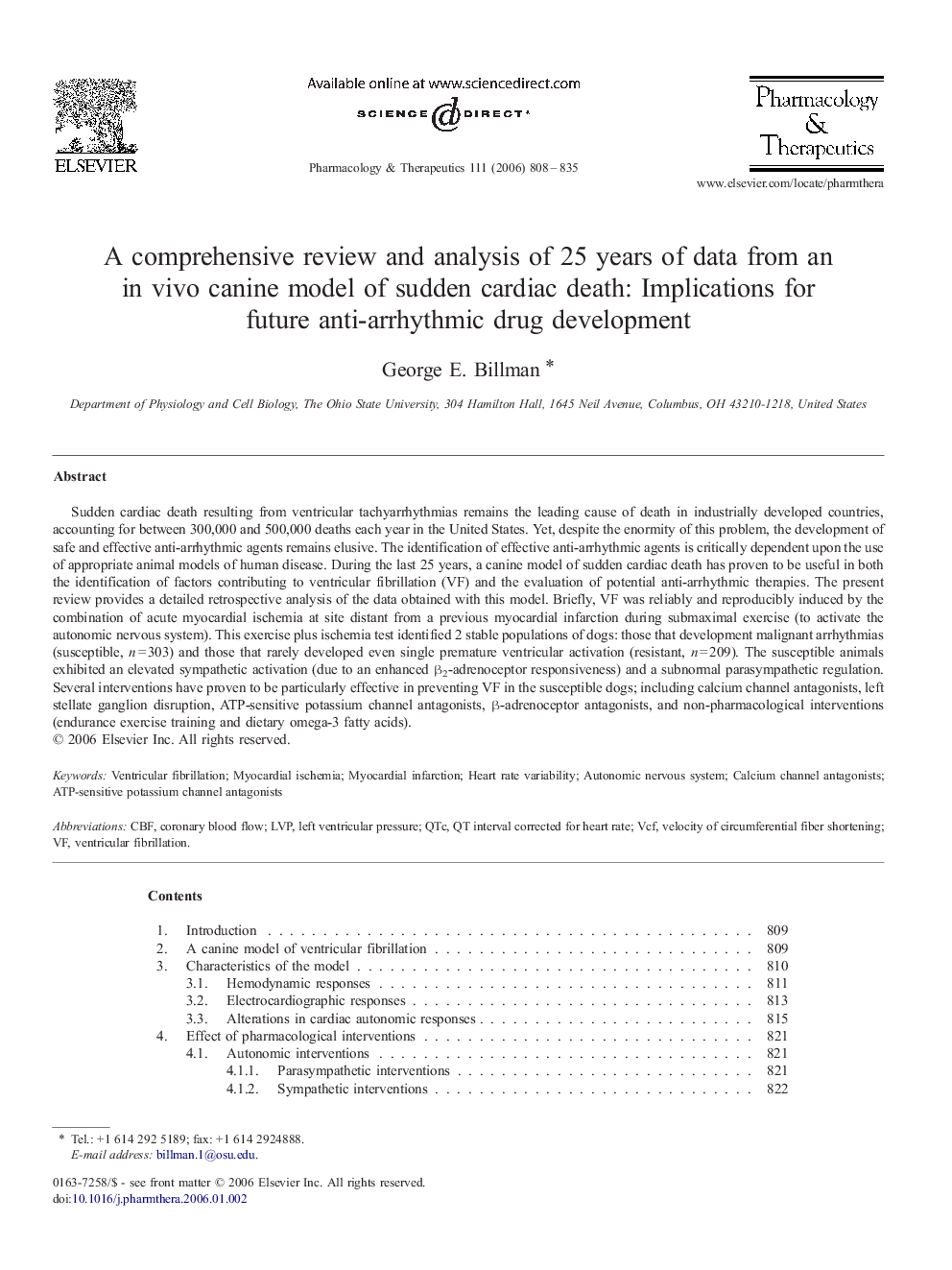| Article ID | Journal | Published Year | Pages | File Type |
|---|---|---|---|---|
| 2564297 | Pharmacology & Therapeutics | 2006 | 28 Pages |
Sudden cardiac death resulting from ventricular tachyarrhythmias remains the leading cause of death in industrially developed countries, accounting for between 300,000 and 500,000 deaths each year in the United States. Yet, despite the enormity of this problem, the development of safe and effective anti-arrhythmic agents remains elusive. The identification of effective anti-arrhythmic agents is critically dependent upon the use of appropriate animal models of human disease. During the last 25 years, a canine model of sudden cardiac death has proven to be useful in both the identification of factors contributing to ventricular fibrillation (VF) and the evaluation of potential anti-arrhythmic therapies. The present review provides a detailed retrospective analysis of the data obtained with this model. Briefly, VF was reliably and reproducibly induced by the combination of acute myocardial ischemia at site distant from a previous myocardial infarction during submaximal exercise (to activate the autonomic nervous system). This exercise plus ischemia test identified 2 stable populations of dogs: those that development malignant arrhythmias (susceptible, n = 303) and those that rarely developed even single premature ventricular activation (resistant, n = 209). The susceptible animals exhibited an elevated sympathetic activation (due to an enhanced β2-adrenoceptor responsiveness) and a subnormal parasympathetic regulation. Several interventions have proven to be particularly effective in preventing VF in the susceptible dogs; including calcium channel antagonists, left stellate ganglion disruption, ATP-sensitive potassium channel antagonists, β-adrenoceptor antagonists, and non-pharmacological interventions (endurance exercise training and dietary omega-3 fatty acids).
